
Spec and Features
Earphone Amplifier: Proprietary HiFi amplifier
SNR: 96dB
Memory Capacity: 4GB internal+TF card slot.
Battery: 600mAH rechargeable Li-ion battery
Battery Life: > 10hours (volume set at 3 degree)
Proprietary Power Saving Technology: EMA Technology (Energy Management and Admeasurement Technology)
Analog signal output: HDMS
Compatible formats:MP3, WMA, WAV, FLAC, OGG, AAC
Screen: 1 inch OLED
Dimension: 81.85mm L x 50mm W x 20.65mm H
Weight: 110g
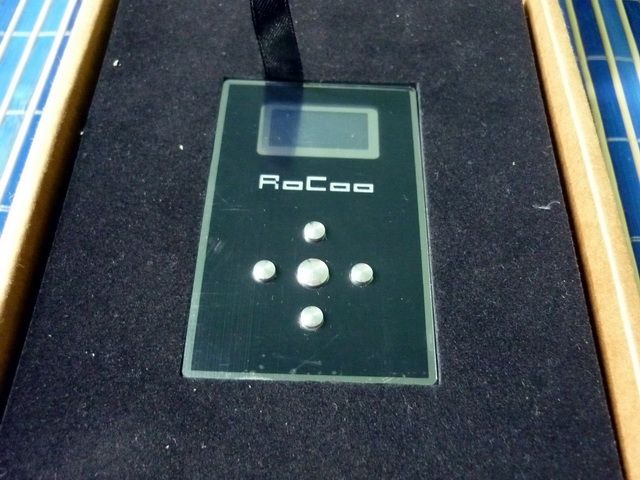

Packaging, Accessories and Build Quality
The DAP comes in a paper box, nothing too fancy but doesn’t feel cheap in any way. Beside the DAP, you will also find an USB power adapter, an USB cable, HSA’s own PAA-1 earbuds, the user manual as well as a ‘VIP’ card (as warranty card, I assumed)
If you have seen the AMP3 before, then the design of RoCoo-P (and actually Studio V as well) isn’t really that far off. In a way, I’ll refer it as having a rough-on-the-edge industrial look. The housing is brushed, anodized aluminum with added front and back plastic plate. The buttons are aluminum as well. The 3.5mm stereo headphone jack and reset hole are on the top while the TF card slot, USB port as well as the power and charging LED indicators are all at the bottom.
I don’t dislike the look of RoCoo-P, but it certainly isn’t going to win a design award. The plastic plate on the front and back are glued onto the aluminum frame and almost impossible to remove without damaging them (not that you should, as it will void your warranty). The problem is that those plastic are prone to scratch, which means you will have to be careful about them if you want your DAP to look as pristine as it can be. Beyond that, I think it is easy to tell that the player itself looks almost bulletproof, and I will be more worry about the other things I put into the bag with RoCoo-P instead of the player itself. One thing I do want to see is actually more buttons - a hold switch and a dedicated power button would be very useful.
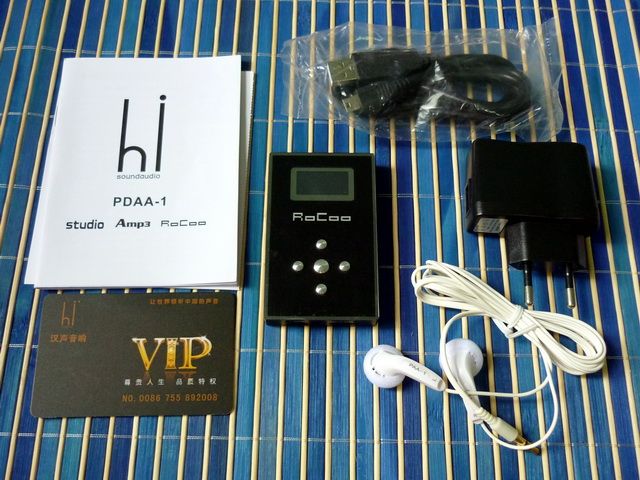

Don't mind the scratch, the DAP comes with a thin plastic film that need to be removed to reveal the smooth surface underneath.
Navigation
One of the thing you can easily tell that RoCoo-P is SigmaTel STMP based is the firmware, which is how it looks in the OLED screen, much like almost every other STMP based DAP, i.e. Cube C30, Hippo Gumstick, ColorFly C3 and Sony B series with the exact same screen configuration. So if you even used a DAP with the STMP chip, getting used to RoCoo-P should be relatively easy. The tricky part, as I have mentioned before, is the lack of extra buttons. I know the chip can support more buttons but somehow HSA decided to stick to just five, and that means the same button, especially the middle one, get overlapped with multiple functions. For example, the mid button acts as power on/off (press and hold), select / exit (long press) as well as play/pause (short press). It is easy to just press a second too long and you’ll have to do it all over again, or worst, turn the player on again. It isn’t the end of the world, but these issues certainly can be avoided if they had been allocated to extra buttons at the first place.
Overall, the navigation isn’t as easy as it can be and will take some getting used to. But it isn’t anywhere near bad enough to quit listening.
Hiss
Hiss is actually a big complain for the old AMP3. While I can’t say the issue has been fully eradicated on RoCoo-P, it is mostly under-controlled. For most part of my listening, except for a hand full of IEM that I know to be very sensitive to hissing (Shure SE530, Denon C710, etc), the hissing is low enough not to take notice besides the quietest passage. To be fair, hiss has always been an issue on most STMP based player, but just slightly worst on HSA’s products because of the extra amping that goes into the design. With RoCoo-P’s higher level of power output, especially in voltage gain, means it will never be as quiet as it can be. But on the other hand, RoCoo-P isn’t quite the DAP designed for pure IEM use. If anything, HSA intended RoCoo-P to drive bigger headphone rather than small IEM (which is why they also made RoCoo-BA for IEM user). Even so, RoCoo-P still does a decent job for majority of my IEM collection, as long as they are not hiss prone in the first place.
Battery Life
HSA quotes over 10 hours of battery life, but I never did a battery draining test to confirm. However, I’ll say it should easily last over 8 hours from day-to-day use in a single charge. Not really much of a battery life to speak of, but still fair for the amount of power the DAP is able to offer.
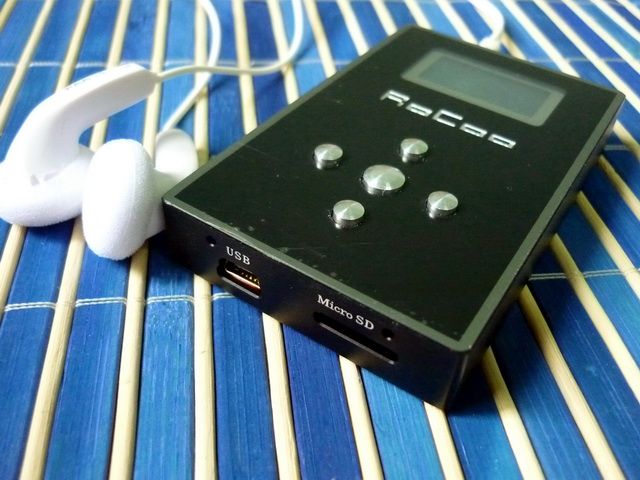
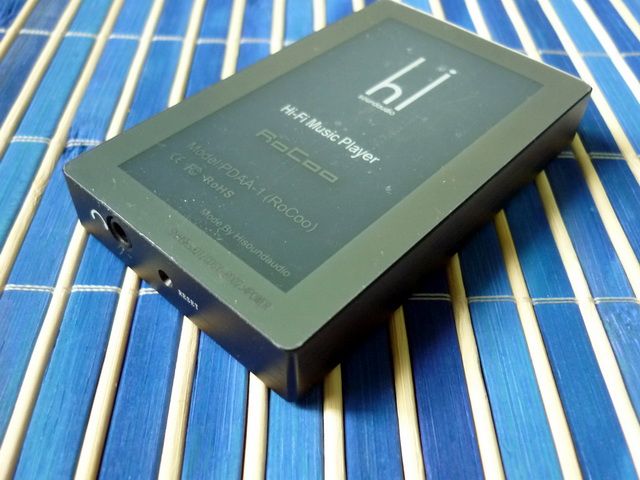
Sound Quality
First, let’s talk about measurement. I did a basic RMAA test and it seems RoCoo-P holds up decently. The frequency response is far from ruler flat as Clip+, though the overall curve is not too bad either. The upper portion of RoCoo-P’s FR has some minor +/-0.5dB ripples and they seem to be consistent to a Chebyshev Type 1 filter (after the DAC stage), not something uncommon to the STMP chipset. The sub-bass (< 100Hz) region however has a -3dB roll-off slowly down to around 20~30Hz region. The roll-off becomes less as the load impedance increases, suggesting that there might be some output caps on the headphone-out and the value is a bit too low for low impedance headphone. The output impedance is measured using a 1kHz test tone and a 47ohm fixed load and calculated to be just about 2ohm. This means, following the 8X rule, any headphone above 16ohm impedance should be well dampened and that’s certainly quite good. Current output is also quite decent. Not as much as Clip+ on the same 47ohm fixed load but it has better consistency on driving lower impedance load. The maximum volume is also much higher, as RoCoo-P can go just a little over 2V AC while Clip+ only reaches 0.55V AC.
Now let’s move on to subjective listening. The first thing the RoCoo-P grabs me is the overall cleanness of sound. Though the measured FR curve might not suggest so, RoCoo-P does give an impression of transparency, bright and open. What is obvious, is that bass while extends decently deep, lacks a good body as well as a fast impact. While using higher impedance headphone does improve the bass body, the transient of bass still feel slightly softer than it supposed to be. That is, it lacks just a good sense of ‘slam’. Mid and treble however sound just fine, if not slightly on the bright side and can be grainy if paired with a bright sounding IEM since it tends to draw out more sparkles and crispiness. It will only make worst if the IEM is already grainy on its own at the first place. But on the other hand, the same brightness can be used to add back sparkles and crispiness to a smooth sounding IEM without EQ or changing the FR curve. Last but not least, the one aspect of RoCoo-P that really impresses me is its soundstage – open, airy, good imaging and well layered. It is enough to make other DAP, such as Clip+ and S:flo2 sound positively soundstage-less. Okay, maybe not quite that impressive, but you get my point.
So how would I position RoCoo-P among other DAP? Subjectively, I’ll say this is a DAP that is ahead of Clip+ and Cube C30, roughly on the same level as s:flo2 (T51) and HM602, but still a distance away from top-end DAP such as HM801. I would think the now discontinued s:flo2 makes for a good comparison to RoCoo-P – Both of them offer a decently clean and detailed sound. s:flo2 has better bass, fuller body and sharper attack, but RoCoo-P has better detail and much wider soundstage. They both have a good amount of output, where s:flo2 offers a real line-out socket while RoCoo-P is stuck with a ‘HDMS’ setting. When activated, it will set the output to maximum automatically and disable the volume adjustment. HSA refers it as some kind of circuit design, though it is hard to say if it is just a software setting or not. Regardless, what it does is setting the output to just a little over 2V, simulating a full strength line-out signal for an external amp. One of the benefits of HDMS is that, by using an amp, you will avoid the -3dB bass roll-off entirely (as amp has much higher input impedance than headphone). Anyway, two things RoCoo-P doesn’t have are a big touch screen or any video playback capability, but those have nothing to do with sound quality anyway.
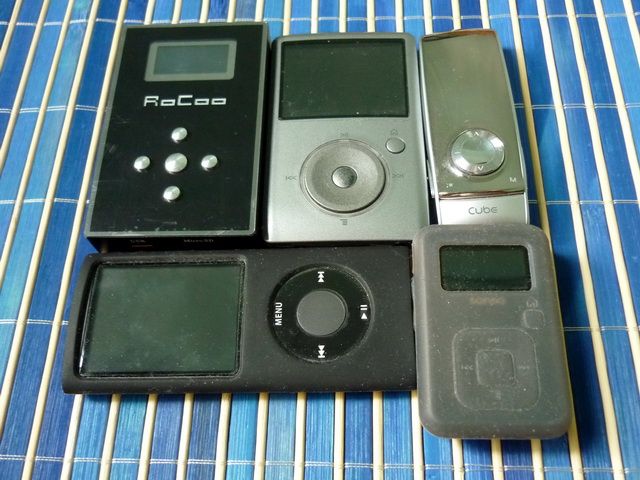
Size comparison: (Top, from left) RoCoo-P, Sansa Fuze, Cube C30. (Bottom, from left) iPod Nano 4G, Sansa Clip+.
PAA-1
For a stock earbuds, PAA-1 is pretty good. But it isn’t on the same level as HSA’s own PAA-1 Pro or Living of course. By itself, PAA-1 is quite a bassy earbuds and definitely has one of the best rumbles of any stock earbuds. However, the mid is slightly dry and distance while the treble is a little grain, even though it has good sparkles. The soundstage is fair. It won’t compete with the big boys, but for a $20 retail earbuds, it stands up surprisingly well against other good earbuds of the same price range, namely Sennheiser MX580/581.
Though I won’t call PAA-1 the best pairing with RoCoo-P due to the earbud slightly grainy treble, the abundance of bass however does make up some of the short coming of the player itself with low impedance headphone. At the end, the result is positive but not perfect.
(see my Earbuds Round-up for a quick comparison of PAA-1 to other earbuds).
Verdict
For US$180 or so on retail, RoCoo-P isn’t exactly a cheap or feature-rich DAP. But if you can get pass the industrial look or the small OLED screen, it isn’t a bad buy either as far as sound quality being the only concern. However, it is a player that works better with semi-high impedance headphone than it is with low impedance IEM. It isn’t to say you can’t use your 32ohm IEM with it, just that it won’t be the most ideal. It could however still sound very good. As with any DAP with a strong character of its own, synergy plays a part as well. But on the other hand, the output is high enough that even slightly harder-to-driver headphone can reach very satisfying volume without an extra amp. 150ohm load isn’t even a problem at all and I would think 250ohm shouldn’t be too steep of a challenge either. Overall, for all its merits and woes, my impression of RoCoo-P remains largely positive. It isn’t a perfect DAP per se, but still feel very solid for day to day use. I do wonder if HSA even consider moving away from SigmaTel platform. As popular as they are, I do get the feeling that HSA is pushing the limit of these chipset. It would probably take something anew to keep up to the market where smart OS or higher end DAC have began to show their dominance.





